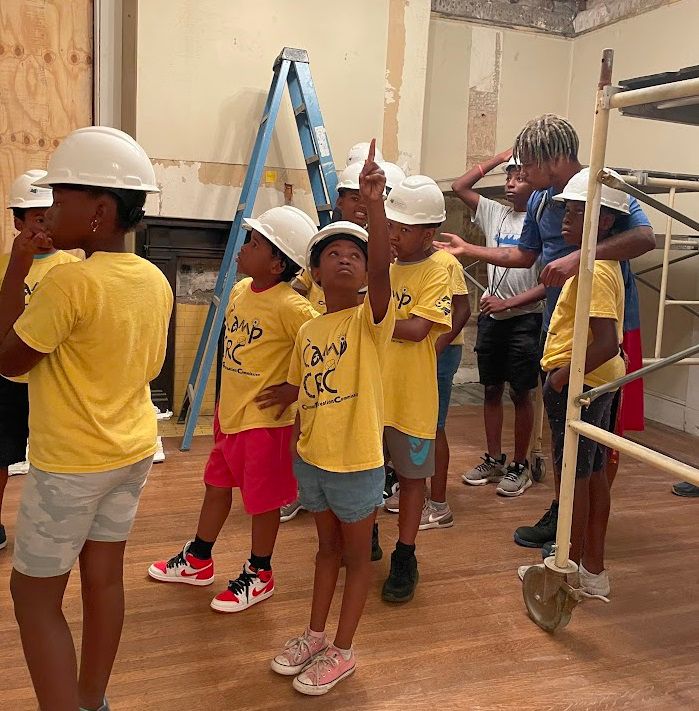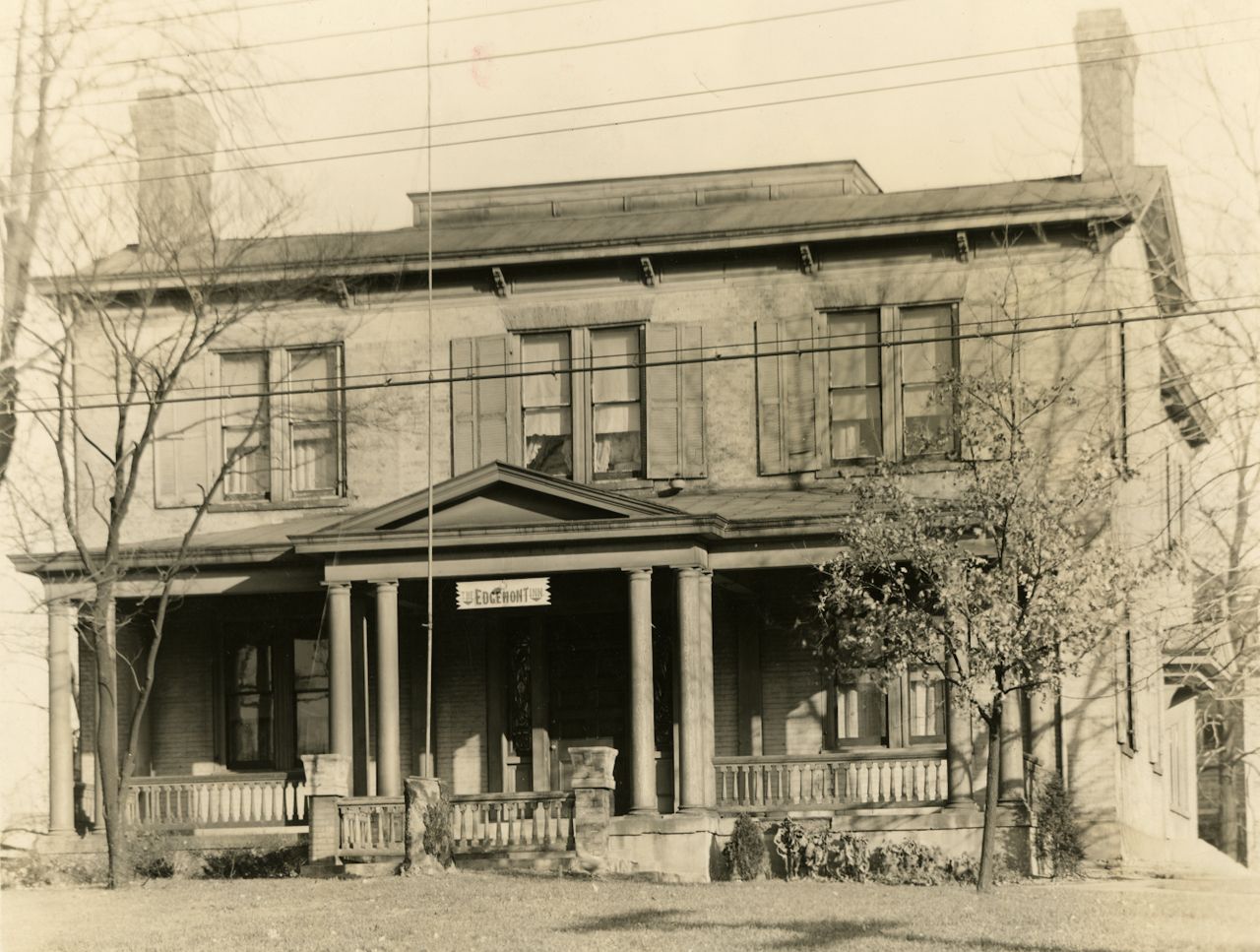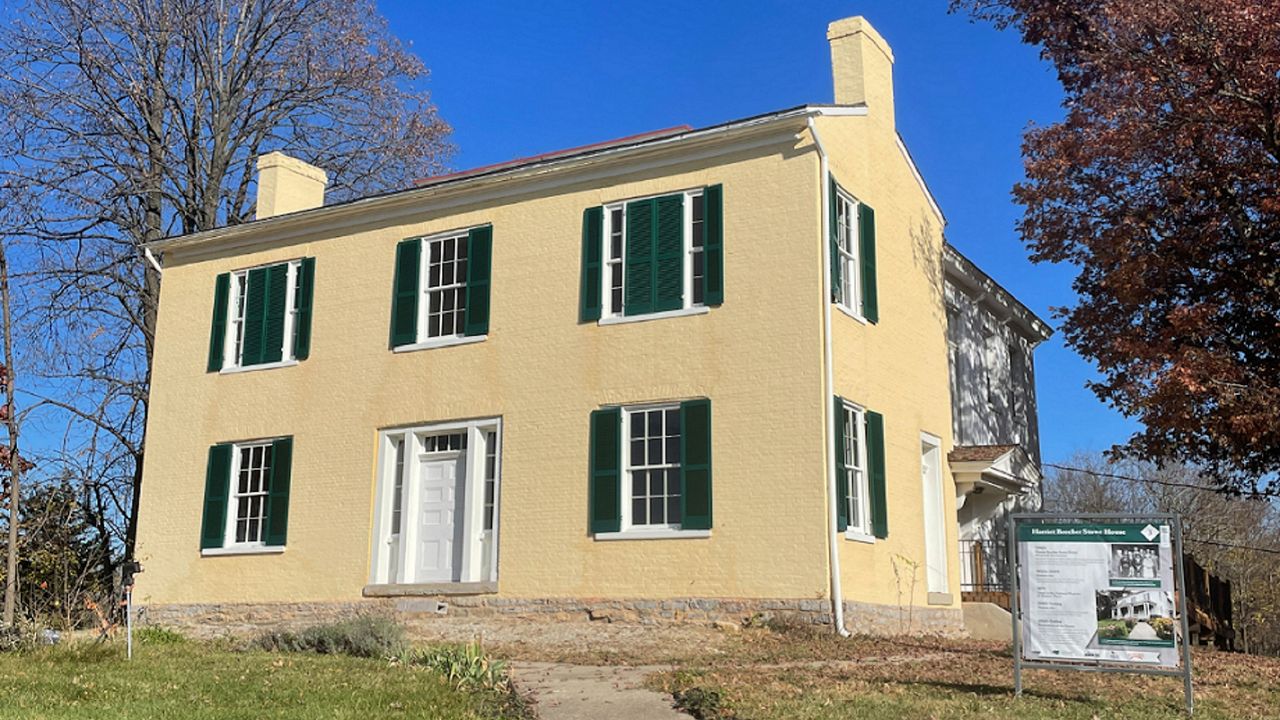CINCINNATI — If the walls of the historic Harriet Beecher Stowe House could talk, they’d have two centuries of stories to tell about its role in improving the quality of life for African Americans.
What You Need To Know
- The Harriet Beecher Stowe House in Cincinnati is hosting a series of events throughout Black History Month
- The historic family home of the author of "Uncle Tom's Cabin" later served as a boarding house for African Americans during the Green Book era
- Museum leaders said the goal of the lectures and discussions is to get people to "use their voice" to help others
The stately brick home on Gilbert Avenue first served as a residence of the family of its famous author and abolitionist namesake in the mid-1800s. Beecher Stowe, a white woman, is best known for penning “Uncle Tom’s Cabin,” a novel that shined a bright light on the horrors of slavery in parts of the United States.
Roughly 100 years later, the property became the epicenter of African American life and culture in the historically Black neighborhood of Walnut Hills.
Today, the Harriet Beecher Stowe House continues that history by telling the stories of unrecognized and unsung heroes who worked quietly for justice and inclusion in Cincinnati and beyond.
To mark Black History Month, the museum planned a series of events throughout February. They include lectures, discussions, film reviews, tours and even archeological analysis of the property as part of its ongoing restoration.
Most of the events are taking place at the Walnut Hills branch of the Cincinnati & Hamilton County Public Library or online because of restoration. Reservations are limited.

Christina Hartlieb, the museum’s executive director, described the programming as a way to ask, “How are we going to use our Power of Voice to make things better for other people?”
“We want to use history to empower individuals to make their voices heard that can affect what’s going on in society around them.”
Beecher Stowe moved to Cincinnati in 1832, at 21, to live with her family and father, Lyman Beecher, who was the president of the Lane Theological Seminary, a Presbyterian college that had an anti-slavery message.
Beecher Stowe lived at the house for periods throughout the 1830s, Hartlieb said, but she also lived elsewhere in the city. As a teacher, she boarded downtown for a while, and after she got married, she moved just down the street from her family home, Hartlieb said.
Although part of a free state, antebellum Cincinnati at the time wasn’t always necessarily friendly to abolitionists or African Americans, said Dr. Littisha A. Bates, a sociologist who specializes in inequality. It also bordered Kentucky, where slavery was legal.
The experiences Beecher Stowe had in her nearly 20 years in Cincinnati played a key role in her penning “Uncle Tom’s Cabin,” Hartlieb said. She published the book in two volumes in 1852.
On Wednesday night, Harriet Beecher Stowe House hosted a discussion about the impact freedom-seeker Henry Bibb and newly freed James Bradley had on Beecher Stowe’s writing.
Nearly a century after the publishing of “Uncle Tom’s Cabin,” the Harriet Beecher Stowe House became an African American boarding house and tavern called the Edgemont Inn.
By the 1930s, Walnut Hills had become an overwhelmingly African American neighborhood. The 1930 U.S. census showed only one white resident lived in the immediate area surrounding the Harriet Beecher Stowe House, and that was its current resident, Mary Montfort, according to Hartlieb.
Even then, African Americans had “jumbled” feelings about the Midwest in the mid-20th century, especially those that bordered Southern states, Bates said.
“On the one hand, they were far enough away from Jim Crow to feel, in some ways, as a safe haven,” the UC professor noted. “Yet, they were also still mindful that some experiences that Black folks had in cities like Cincinnati weren’t completely devoid of racism and very Jim Crow-feeling policies and practices.”
As a response to lingering racial tensions, Victor Green created The Negro Motorist Green Book. From the mid-1930s through the ‘60s, the annual publication listed hotels, gas stations, restaurants and other businesses friendly to Black travelers.

Bates described Green Book businesses in neighborhoods like Walnut Hills and West End as safe spaces for Black people to do things like buy clothing, enjoy a meal or “just exist in their own humaneness.”
The Edgemont Inn was listed in the Green Book, as was the former Manse Hotel on Chapel Street, a central hub for Black life in Cincinnati. The two sites are a three-minute walk from one another.
“Harriet Beecher Stowe used her power of voice to help white Northerners understand what slavery really was and to change public opinion about slavery. Victor Green wasn’t able to stop discrimination, but he used his voice to help Black people navigate through the difficult situations they faced,” Hartlieb said.
The Harriet Beecher Stowe House hosts discussion groups and lectures throughout the year on topics ranging from modern abolitionism to different aspects of Black and women’s history. They also collaborate with another organization on a walking tour of Walnut Hills to teach about the neighborhood’s African American and abolitionist history.
Right now, between 70% to 80% of the information shared on the home tours focus on abolition and the Underground Railroad, Hartlieb said. She said the other 20% to 30% goes to the Green Book period and the development of Walnut Hills.
But for the museum’s other programming, those numbers are a little more evenly spread throughout the year, she said.
“We are deliberately restoring part of the house to the Abolitionist era and another part of the house to that Edgemont Inn period,” she said.
Restoration crews have been working for the past several months uncovering the original Greek Revival-style architecture to expose more secrets the house’s history may hold. The work could take a few more years, though.
Bates believes preserving historic sites and monuments such as the Harriet Beecher Stowe House is important, Bates said, as long as they represent “who we want to be as a city, who we want to be as a nation,” Bates said.
“Having the Harriet Beecher Stowe House and things in that realm suggest Cincinnati is safe for abolitionists and people of color, Black people in particular,” she added. “It also reminds us to stay on that path.”
Correction: A previous version of this story incorrectly listed the publishing date of Uncle Tom's Cabin. (Feb. 2, 2023)




